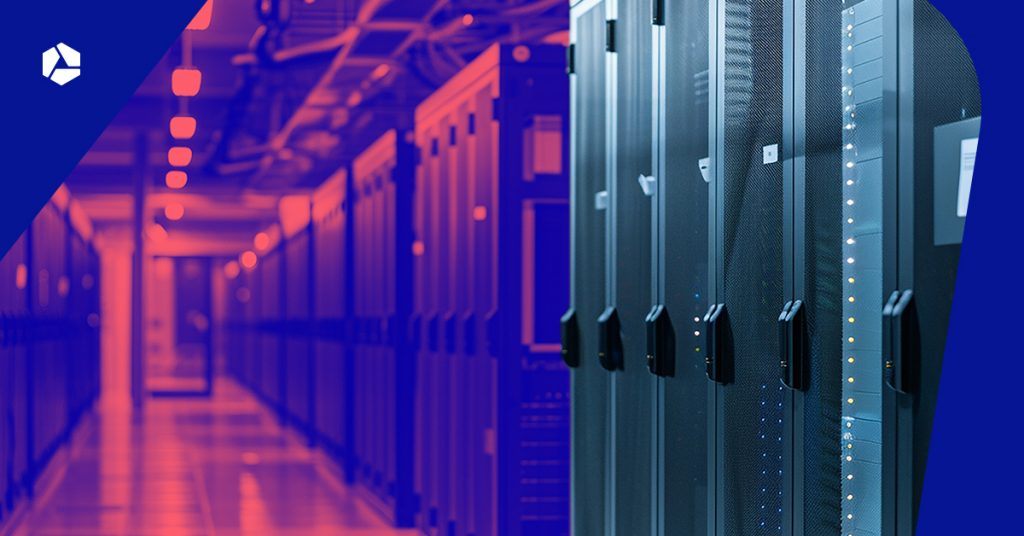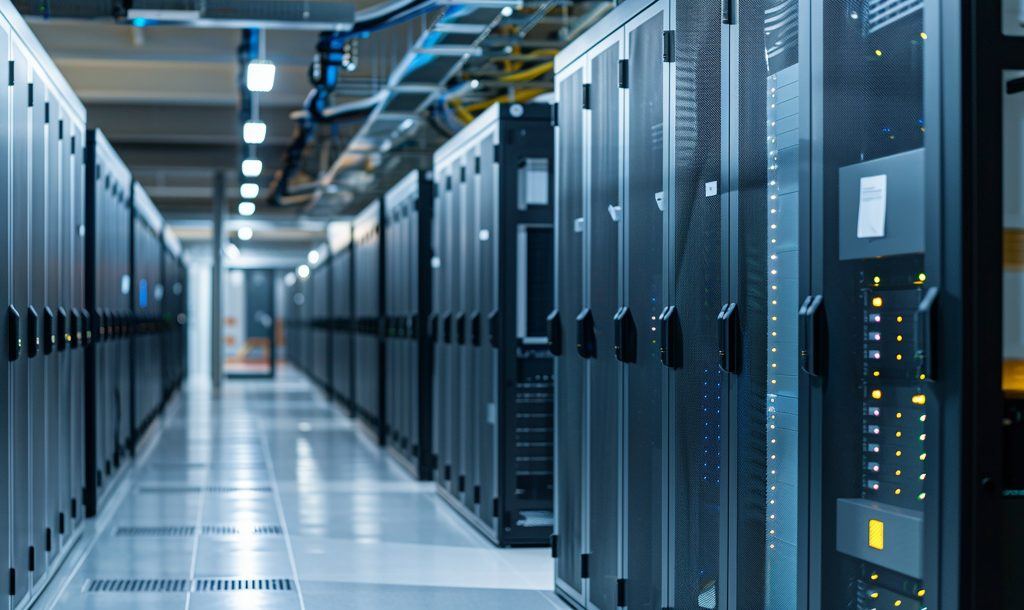What is a hyperscaler?

When you store your data in the public cloud, you’re likely relying on hyperscalers. Tech giants like Amazon Web Services (AWS), Microsoft Azure, and Alibaba Cloud offer cloud solutions at massive scale. While these platforms come with plenty of advantages, it’s important to be aware of the potential risks—especially around privacy and data protection. In this article, we explain what hyperscalers are and what your business should keep in mind when using them.
What are hyperscalers?
Hyperscalers are technology companies that offer IT infrastructure and cloud services at an enormous scale. The term "hyperscaler" refers to their ability to rapidly scale resources up or down, depending on demand.
Think of services like storage, computing power, databases, and networking—entirely delivered over the internet.

Well-known examples include American cloud providers such as Amazon Web Services (AWS), Microsoft Azure, and Google Cloud Platform. In Asia, Tencent Cloud and Alibaba Cloud are major players. Their data centers are distributed across the globe, offering virtually unlimited capacity to businesses of all sizes.
Applications on a global scale
In an era where digital services are essential across nearly every industry, hyperscalers make up a significant part of our digital economy.
They enable companies to run applications globally, process data in real time, and rapidly launch new digital products. With hyperscalers, businesses no longer need to manage their own physical servers, allowing them to work with greater flexibility, efficiency, and innovation.

In addition, hyperscalers power emerging technologies like artificial intelligence, edge computing, machine learning, and big data analytics. While these giants are increasingly under scrutiny, their role in driving digital growth over the past few years has been undeniable.
What defines a hyperscaler?
- Hyperscalers operate dozens to hundreds of data centers worldwide.
- They can serve millions of users simultaneously and process petabytes of data.
- Their capacity is virtually unlimited and scales dynamically with demand.
- Management, provisioning, and updates are largely automated through software-driven systems.
- Less human intervention means faster response times and a lower risk of errors.
- Automation enables rapid scaling and keeps costs under control.
- Data and services are spread across multiple geographic locations (availability zones and regions).
- This increases reliability, reduces latency, and provides protection against outages.
- Hyperscalers invest heavily in renewable energy sources like solar and wind power.
- Their data centers are designed to minimize energy waste, using efficient cooling systems and smart power distribution—just like many modern local data centers.
Explained: What does a hyperscaler do?
The core focus of a hyperscaler is delivering cloud-based IT services. They do this through a global network of so-called 'hyperscale data centers'.
Hyperscalers provide these services at a scale and level of flexibility far beyond what traditional IT providers can offer. A key advantage is that customers can easily scale up capacity whenever needed. This makes hyperscalers ideal for workloads with fluctuating or rapidly growing demand—such as streaming platforms, e-commerce sites, or AI models.

The foundation of modern cloud computing
Hyperscalers can be seen as the foundation of today’s cloud computing landscape. They allow businesses to consume Infrastructure as a Service (IaaS) without having to invest in their own physical hardware.
In addition to IaaS, hyperscalers also offer Platform as a Service (PaaS) and Software as a Service (SaaS). These services enable organizations to develop, test, and deploy applications faster and more efficiently.
Hyperscalers in out daily lives
Hyperscalers play a significant role in our digital lives. Here are a few concrete examples:
- Thanks to their global infrastructure, software-defined networking, and high availability, hyperscalers enable fast, secure, and scalable hosting. Websites and apps remain stable—even under heavy traffic or peak loads.
- Hyperscalers offer massive computing power and specialized tools for data processing, machine learning, and artificial intelligence. This allows for complex real-time analytics without the need for local hardware.
- Platforms like Netflix, YouTube, and Spotify run on hyperscale infrastructure to serve millions of users worldwide simultaneously.
- Hyperscalers provide fast load times, dynamic scalability, high availability, and smooth content delivery.
- Services like Google Stadia, NVIDIA GeForce Now, and Xbox Cloud Gaming rely on hyperscalers to stream graphically intensive games—no expensive hardware required on the user side.

Meet the five biggest hyperscalers
- Amazon Web Services (AWS): The market leader in cloud computing, known for its vast portfolio of services and global infrastructure.
- Microsoft Azure: Tightly integrated with Microsoft software, Azure is a popular choice for businesses already using Windows, Office, and other Microsoft solutions.
- Google Cloud Platform (GCP): Delivers powerful tools for data analytics, AI, and machine learning—favored by tech-driven organizations and developers.
- Meta (Facebook): While not a public cloud provider in the traditional sense, Meta operates massive hyperscale infrastructure to support its social platforms like Facebook and Instagram.
- Alibaba Cloud: China’s largest cloud provider and a major force in Asia, with rapidly growing reach in other parts of the world.
Other noteworthy hyperscalers:
- Tencent Cloud: A leading Chinese provider with strengths in gaming, AI, and mobile services
- IBM Cloud: Focused on hybrid cloud solutions for enterprise clients
- Oracle Cloud: Especially strong in databases and enterprise applications
- Huawei Cloud: Emerging across Asia and Africa, with a focus on AI and infrastructure services
How hyperscalers work, a clear and simple explanation
- Hyperscalers use thousands—sometimes millions—of servers to deliver compute power, storage, and networking capabilities.
- Everything is built for large-scale operation and maximum efficiency.
- They rely on virtualization (virtual machines) and containerization to flexibly allocate resources.
- Built with standardized, modular hardware components that are easy to add or replace.
- Data centers are distributed across geographic availability zones to ensure reliability and uptime.
- They’re also designed for energy efficiency, with optimized cooling, power usage, and network connectivity.
- Hyperscalers can instantly scale capacity up or down—no manual intervention required.
- Smart software and advanced orchestration platforms handle automatic monitoring, recovery, and updates.
- This flexibility makes hyperscalers ideal for sudden traffic spikes or global rollout of digital services.

Pros and cons of hyperscalers
Advantages
Hyperscalers offer clear benefits for companies aiming to grow digitally. Their biggest strength? Flexibility: you can scale IT capacity up or down based on your needs, without large upfront investments.
Thanks to their scale and automated infrastructure, their services are often competitively priced. However, major hyperscalers are also known for opaque pricing models, and costs can add up quickly.
Hyperscalers deliver fast, reliable cloud solutions with high availability and performance—making them the engine behind innovation and digital transformation for many organizations.
Disadvantages
Concerns about the downsides of hyperscalers are increasing—especially now that Donald Trump is back in power in the United States, reigniting geopolitical tensions.
The ongoing trade war with countries like China and the focus on national interests cast doubt on the stability and security of cloud services provided by U.S.-based companies.
The role of local cloud providers
European businesses using AWS, Microsoft, or Google are increasingly questioning what happens if laws or international relations suddenly shift. U.S. legislation like the Cloud Actreinforces this risk by potentially exposing European data to foreign authorities.
This is why local cloud providers are gaining importance: they offer more transparency about where data is stored, who has access to it and which legislation (GDPR) applies. They are less subject to foreign political pressure, which ensures greater legal certainty and control.
In addition, customers of local providers are often assured of better, faster and more personalised support in their own language. It is also not easy to obtain a tailor-made proposal from a hyperscaler.
It is therefore not a bad idea to consider a hybrid approach (for example, storing part of your data on premise) or to collaborate with local cloud providers such as Combell.
Risk of vendor lock-in
Other disadvantages of hyperscalers also remain relevant: the concentration of power among a few tech giants limits freedom of choice and increases the risk of vendor lock-in.
Unforeseen costs for data traffic, for example, can quickly add to the bill. In addition, the ecological impact of hyperscale data centres remains a major concern, despite investments in green energy.
Also read
Hyperscaler or local cloud hosting?
The rise of hyperscalers has fundamentally changed our digital world. Their strength lies in unprecedented scalability, global availability and technological innovation. They are virtually indispensable for many applications such as streaming or hosting on a global scale.
Nevertheless, it is important not to blindly trust hyperscalers. Especially in times of geopolitical unrest and increasing dependence on foreign players, there is a growing need for control, transparency and legal certainty.
Local cloud providers offer that little bit extra in this area: more insight into how your data is stored, more accessible support and services, and everything in accordance with European legislation.
The choice between a hyperscaler and a local provider is therefore not purely technical, but also strategic. Whatever you choose, it is crucial that your cloud strategy fits your business, your data requirements and your long-term vision.


